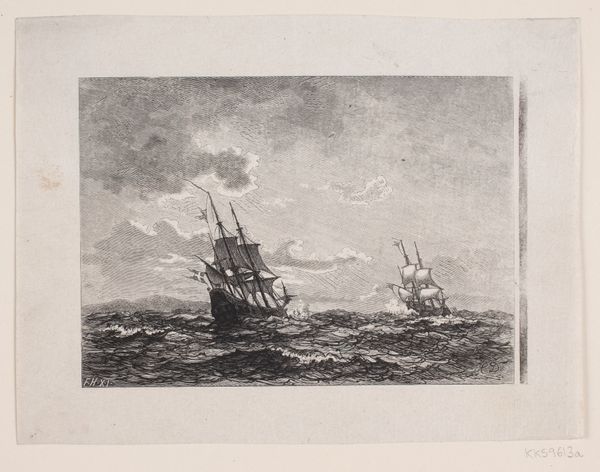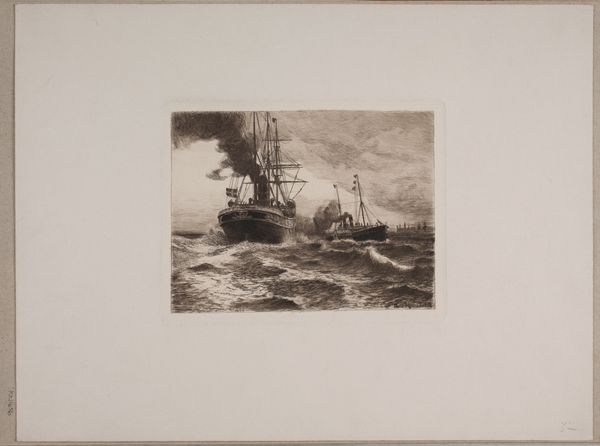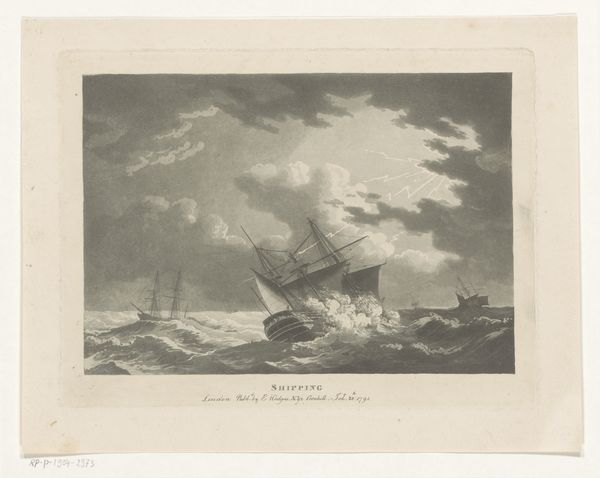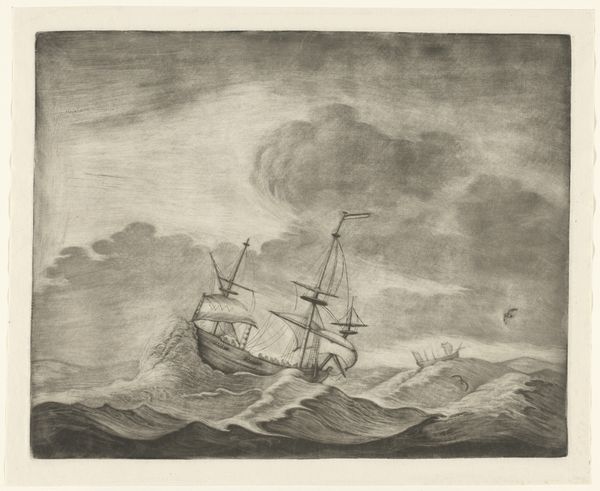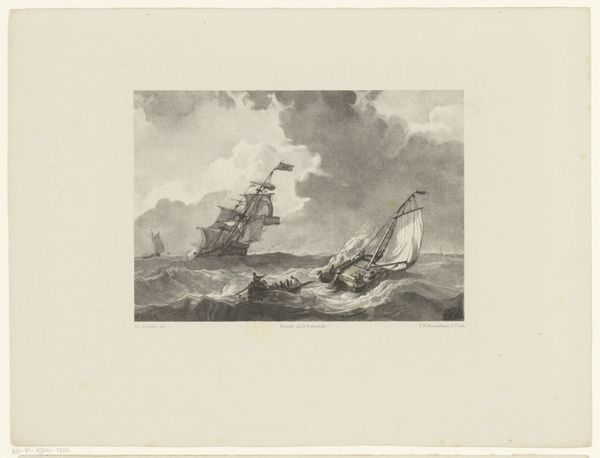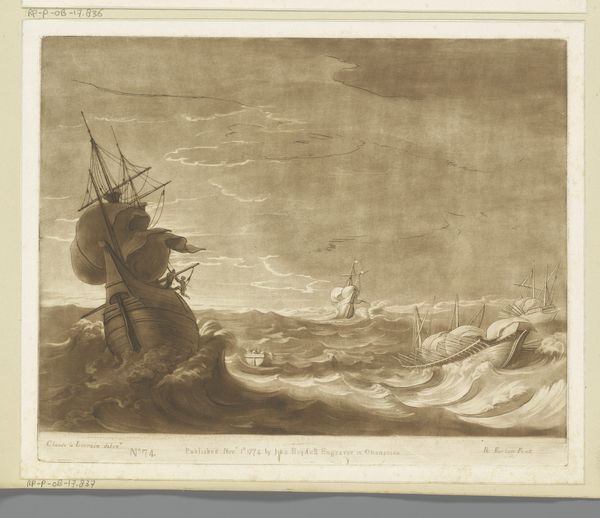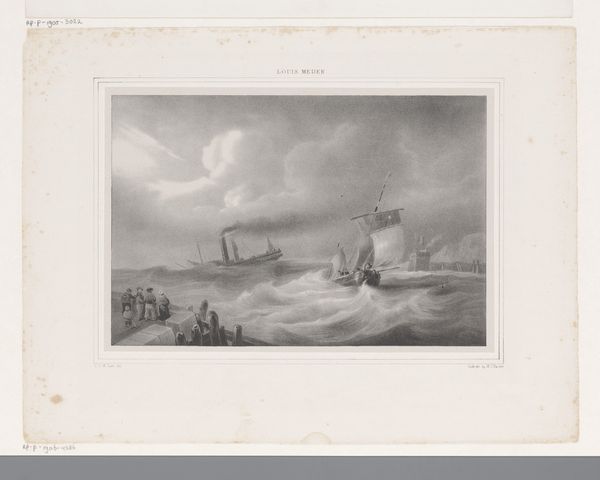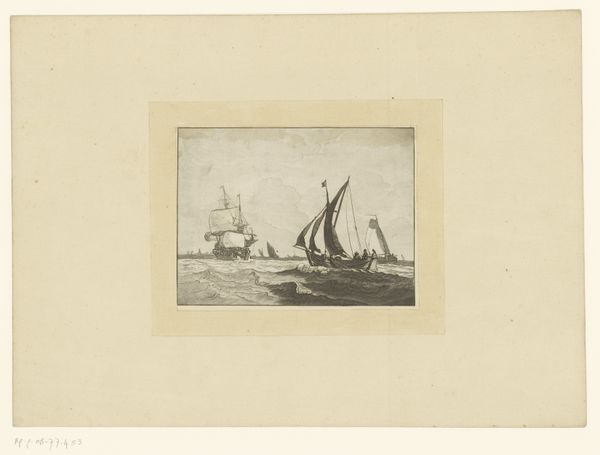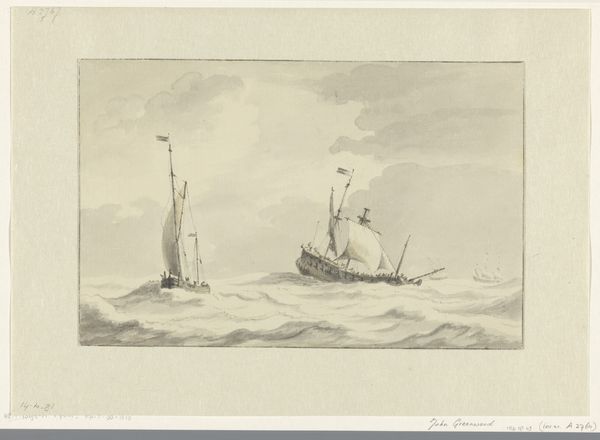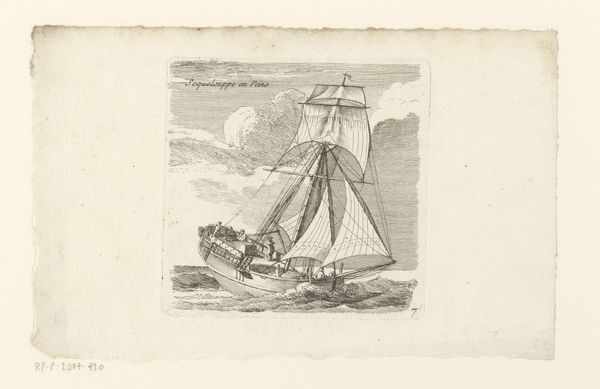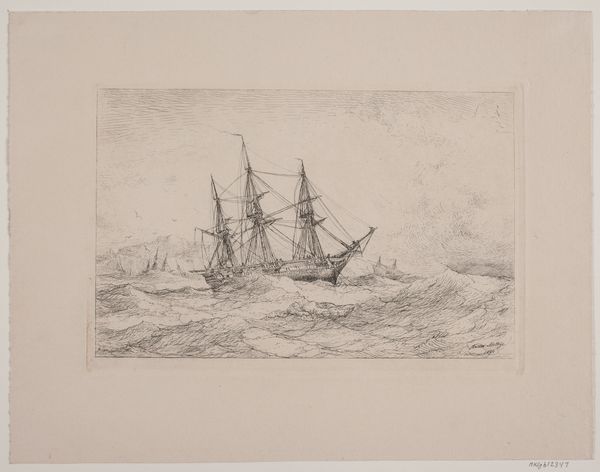
Dimensions: height 272 mm, width 356 mm
Copyright: Rijks Museum: Open Domain
Adolf Carel Nunnink made this lithograph, "Zeilboten op wilde zee", likely in the mid-19th century. Lithography is a printmaking process based on the principle that oil and water don't mix. The artist would draw an image with a greasy crayon onto a flat stone, treat the stone with chemicals, and then use oil-based ink to print the image. The appeal of lithography was in its capacity to reproduce a wide range of tones, and the textural effects of crayon drawing. Here, those qualities lend themselves perfectly to depicting a stormy sea. Consider how the gradations in tone capture the dynamism of water, the looming sky, and the texture of billowing sails. What’s also interesting is the social context. Lithography democratized image production, making art more accessible. This print exemplifies how industrial processes could capture even the most dramatic and romantic subjects. The combination of artistic skill and mechanical reproduction speaks to a changing world, where both nature and art were being reshaped by new technologies.
Comments
No comments
Be the first to comment and join the conversation on the ultimate creative platform.
